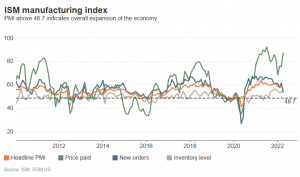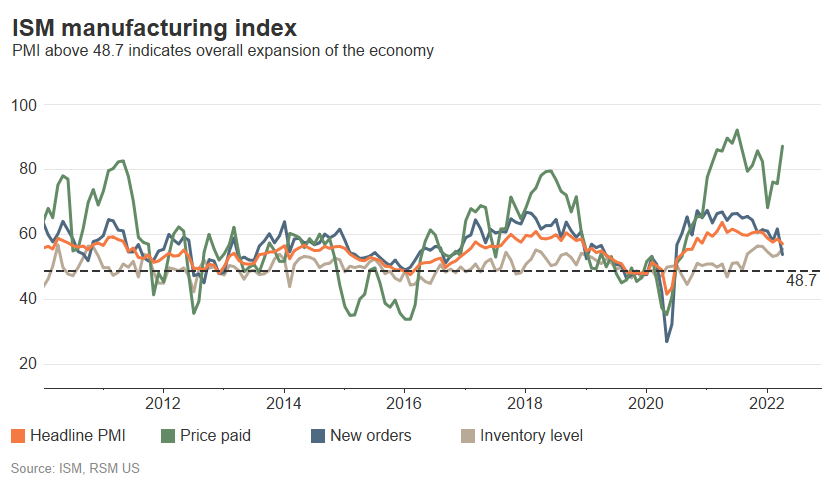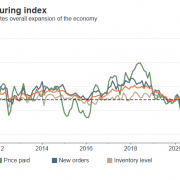Chart of the day: Manufacturing slows amid surge in raw material prices
BY TUAN NGUYEN

Manufacturing slowed down in March as input prices surged on the back of the Russian invasion of Ukraine.
The headline manufacturing purchasing managers’ index was down to 57.1% from 58.6% in February, the lowest since September 2020, the Institute for Supply Management reported on Friday. The index, however, showed an expansion for the 22d consecutive month.
The prices paid component—a proxy for raw material prices—shot up by 11.5 percentage points to 87.1% in March as oil and other commodity prices surged.

High prices and uncertainties caused demand to slow significantly on the month. The new orders subindex declined by 7.9 percentage points to 53.8%. This marked the largest drop since April 2020, when the economy was just coming out of the pandemic shutdown.
Lower demand growth also slowed down production as the production subindex fell to 54.5%—a 4 percentage-point drop from February’s reading.
Inventories, as a result, improved slightly on the month with both inventories and customers’ inventories indexes increasing on the month. The backlog of orders was down as well.
What is more concerning is that the war in Ukraine has been disrupting global trade, as seen in the new export orders and imports subindexes. New exports orders slowed by 3.9 percentage points while imports of input materials were also down by 3.6 percentage points.
The great uncertainty stemming from inflation, the Federal Reserve’s rate hike and, most important, the geopolitical conflict in Eastern Europe is putting producers in a tough situation to shape their business plans.
Supply constraints and higher input costs require raising prices, but the fear of moderating demand makes the decision to raise prices more challenging.
Uncertainties also caused mixed responses from surveyed participants. Some said that supply chain issues have been improving, while others seeing those bottlenecks worsen. That is because the geopolitical conflict is affecting different sectors very differently.
The takeaway
We should expect manufacturing to moderate even more as fiscal support wanes and monetary policy becomes less accommodative. Demand will slow, yet that does not mean a contraction will come anytime soon. The expansion streak will continue as global trade comes back and travel restrictions are lifted.
Source:Chart of the day: Manufacturing slows amid surge in raw material prices (rsmus.com)




